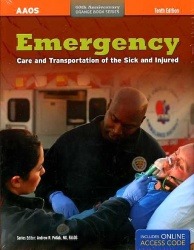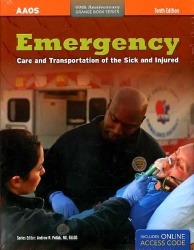Introduction
Trauma is a major cause of death in people in different parts of the world. It is also a prime cause of death in many young adults in the United States. In this situation, NREMT Trauma Assessment becomes essential. The assessment sets forth a few essential trauma guidelines to reduce the number of deaths or disabilities in traumatic patients. The activity also highlights the roles performed by the interprofessional team to assess a trauma patient.
Key Objectives of the Assessment
Identification of the Technique
Identification of the right technique is the prime objective in the NREMT Medical Assessment of traumatic injury patients. The technique will depend on the level or stage of trauma and the underlying reason for it.
Highlight the Preparation Required
Another objective of trauma assessment is to determine the preparation required to assess any trauma assessment.
Review of Clinical Significance
Trauma assessment reviews the clinical significance of key findings done at the time of assessing trauma patients.
Description of Key Strategies
NREMT Medical Assessment of trauma patients also describes the strategies for the interprofessional team to improve communication, care, and coordination to advance the assessment of trauma patients and improve their outcomes.
Trauma Assessment Needs Systematic Approach
Everyone knows that the mortality in traumatic patients takes place because of cardiopulmonary arrest, hemorrhage, and syndromes related to multiple organ dysfunction. Whenever nurses, physicians, and other medical professionals have to carry any trauma victim, they should communicate effectively.
In other words, Patient Assessment EMT should adopt a fully organized and systematic approach while assessing trauma patients. Doing so will not only identify immediate life threats in the victims but also help in their stabilization.

Airway Obstruction as a Part of the Assessment
Airway obstruction is a primary but preventable cause of mortality in trauma patients. Hence, professionals who have an NRP Certificate assess the airway obstruction by communicating with patients. In most cases, EMTs have to check whether patients respond to their asked questions.
Airway evaluation also involves a visual inspection of trauma victims. NREMTs also check any problems related to cardiac arrest, look for any symptoms related to respiratory problems, and inspect the neck, face, and oral cavity.
Whenever EMTs inspect and palpate trauma patients, they look for dental or oral injury and identify any obstruction to intubation. Indeed, airway assessment is possible only when a trauma victim remains conscious. However, unconscious victims and the ones who fail to protect airways require incubation immediately. Medical experts have to make sure to secure the endotracheal tube to avoid extubation accidentally, as it may cause morbidity in traumatic patients. Alternatively, medical professionals should perform a cricothyrotomy.

Conclusion
Trauma Assessment involves the proper organization of treatment procedures and therapies to apply to traumatic patients. Therefore, when individuals with traumatic injuries undergo proper treatment, they improve their conditions gradually and get a chance to develop strategies to improve their outcomes.
PALM DESERT – Main Office
73700 Dinah Shore Drive, Suite 107,
Palm Desert, CA 92211
1-760-832-iCPR (4277)
PalmDesertCPR@gmail.com
https://www.yourcprmd.com/emt-skills-competency-verification-approved-by-the-emsa/




















No Comments